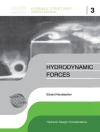In this book, researchers at the forefront of the field explain the minimum necessary background knowledge and introduce important topics in molecular robotics in an easy-to-understand manner.
Molecular robotics is related to many fields, such as systems engineering, control engineering, computer science, biochemistry, biophysics, polymer chemistry, nucleic acid chemistry, molecular biology, and ethics. The whole picture of molecular robotics can be grasped only by looking at these fields from a bird’s-eye view. This book has been planned in the belief that such a book is essential for students and those new to the field to understand the ongoing expansion of molecular robotics.
The book consists of eight chapters: introduction, design theory of molecular robots, systemization technology, molecular nanotechnology, molecular actuators, molecular materials, medical applications, and social acceptance. In each chapter, the reader can get a general idea of the theory, underlying technology, medical applications, and social issues, and can also understand what is currently being done on the research front. In addition, there are many parts that introduce topics related to molecular robotics.
Spis treści
1. Design theory of molecular robots.- 2. Molecular system integration technology.- 3. Molecular nanotechnology.- 4. Molecular actuators.- 5. Molecular materials.- 6. Medical applications of molecular robots.- 7. Social acceptance of molecular robotics.
O autorze
Satoshi Murata received his Dr. Eng. from Nagoya University in 1997. His research interests include molecular robotics, DNA nanotechnology, molecular computing, autonomous distributed systems, and emergent systems. He is currently a professor in the Department of Robotics at Tohoku University. He is the author of Self-Organizing Robots (Springer 2012) and four other books. He won the Good Design Award from METI, Japan, 2007; Outstanding Paper Award from SICE, Japan, 1996; and Outstanding Transaction Paper Award from IEEE, 1992. He has 22 years of teaching experience at Tokyo Institute of Technology and Tohoku University.












